In ‘Chevalier,’ the Sets Have as Much Swagger as the Hero
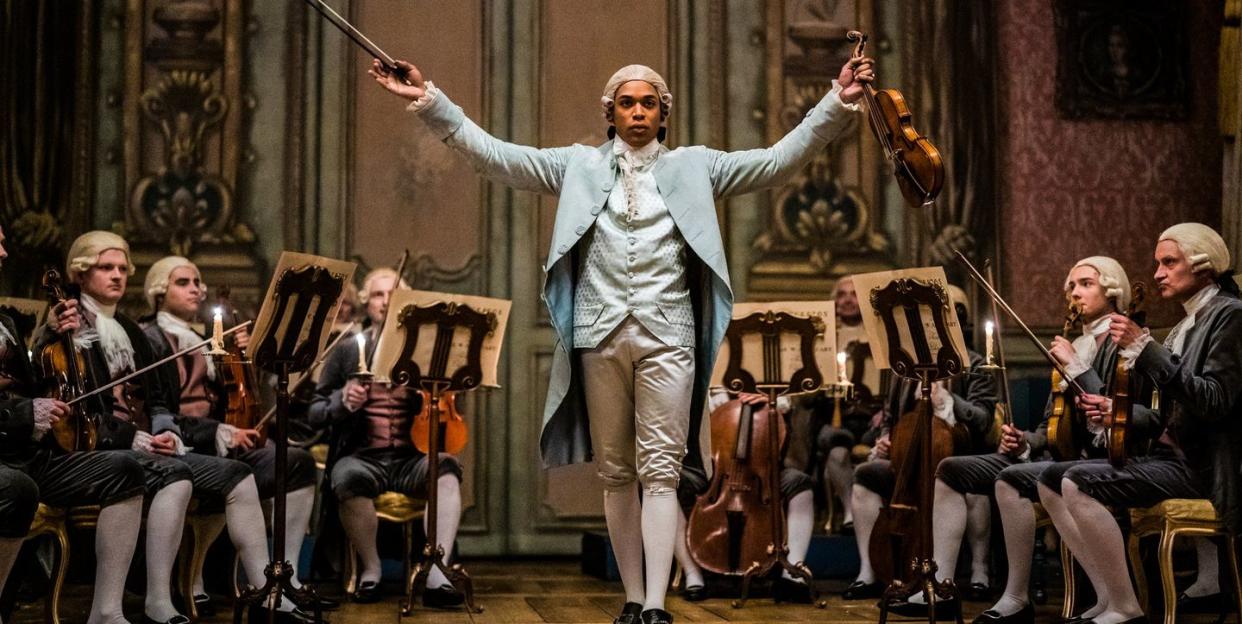
- Oops!Something went wrong.Please try again later.
- Oops!Something went wrong.Please try again later.
"Hearst Magazines and Yahoo may earn commission or revenue on some items through these links."
From the opening seconds of Chevalier, the new film from Searchlight Pictures, you know you’re in for a wild, revolutionary ride. You find yourself in the middle of an intimate classical concerto, the Baroque stage surrounded by panels of soft-plum-painted wall panels and green damask, with an audience bedecked in extravagant 18th-century finery looking on. Suddenly a figure saunters right down the middle of the jewel-box theater’s center aisle. The music abruptly stops—the equivalent of an 18th-century record scratch—and the handsome stranger suggests a musical duel with the lead musician on stage: Wolfgang Amadeus Mozart.
The swaggering figure and the film’s hero is Joseph Bologne, aka Chevalier de Saint-Georges, a man who is today remembered as the “Black Mozart,” and more than worthy of remembrance in his own right. Bologne—born enslaved on a plantation in Guadeloupe in 1745—came to epitomize the 18th-century Black excellence. Not only was he exceptionally prodigious in music (at one point he was considered for the role of director at the Paris Opera), he also excelled in math, literature, and fencing. His immense talent was paired with charming character traits designed to attract attention. In fact, he befriended Marie Antoinette, who gave him a knighthood while he was just a teenager. No surprise, amid his white French peers, he became a target both for admiration and near-lethal envy.
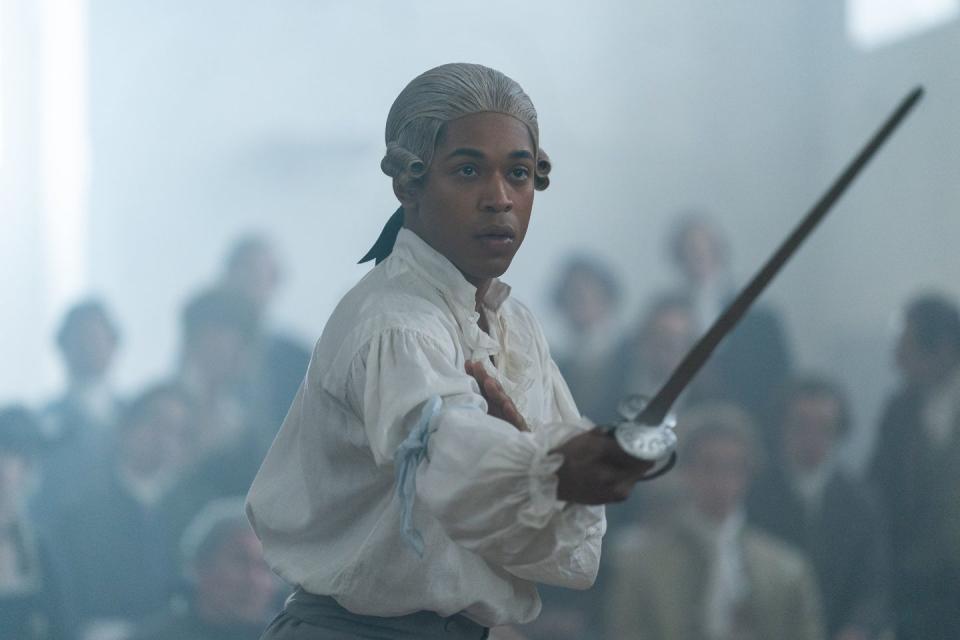
With Chevalier, director Stephen Williams aims to present Bologne’s story with historical accuracy and enough flair to enrapture a modern audience. Starring relative newcomer Kelvin Harrison Jr. (himself a polymath who mastered the violin in six months in preparation for the role), the film invites the audience to consider the emotional, social, and artistic strain that the chevalier would have experienced as a Black creative, at once restricted by racist laws and social mores but lauded for his many gifts.
Assisting Williams in creating the sumptuous and politically fraught world in which Chevalier takes place is production designer Karen Murphy and costume designer Oliver Garcia. Murphy’s background in architecture—not to mention a tenure with Baz Luhrmann where she worked on Moulin Rouge and The Great Gatsby—helped her tackle the challenge of recreating prerevolutionary France from sets mostly in Prague. Though few scenes were filmed in actual historic buildings, one stood out: “The state theater where we filmed the opening scene is where Mozart premiered his opera Don Giovanni in 1787,” Garcia, who produced the entire wardrobe for the film in under four weeks, tells ELLE DECOR.
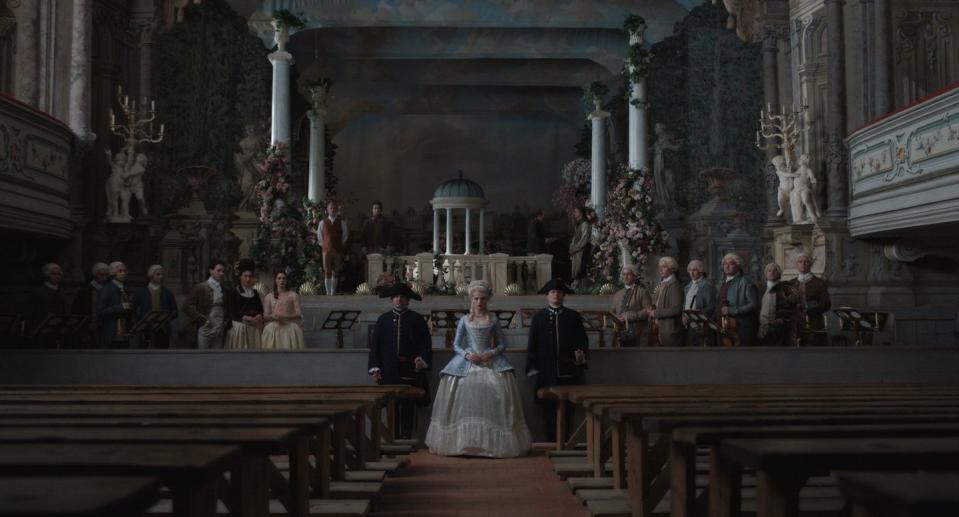
In that opening scene, the soft-hued painted boiserie wall paneling was already period correct and the parquet wood floors similar to those found in Versailles. To recreate what couldn’t readily be found, Murphy hit the books, including Gabriel Banat’s The Chevalier de Saint-Georges: Virtuoso of the Sword and the Bow and Hilary Mantel’s A Place of Greater Safety. “Researching a film with a historical context predating photography can be tricky, and immersing yourself and the team in history, architecture, and decorative art from the period is essential,” Murphy says. “Visiting preserved buildings and museums housing furniture, fabrics, art, and everyday objects was integral to the process.”
She also consulted Olivette Otele, a professor and the author of African Europeans: An Untold History. “Professor Otele worked with us on the specifics of the links between history, memory, and geopolitics concerning French and colonial pasts in post-slavery societies,” Murphy adds.
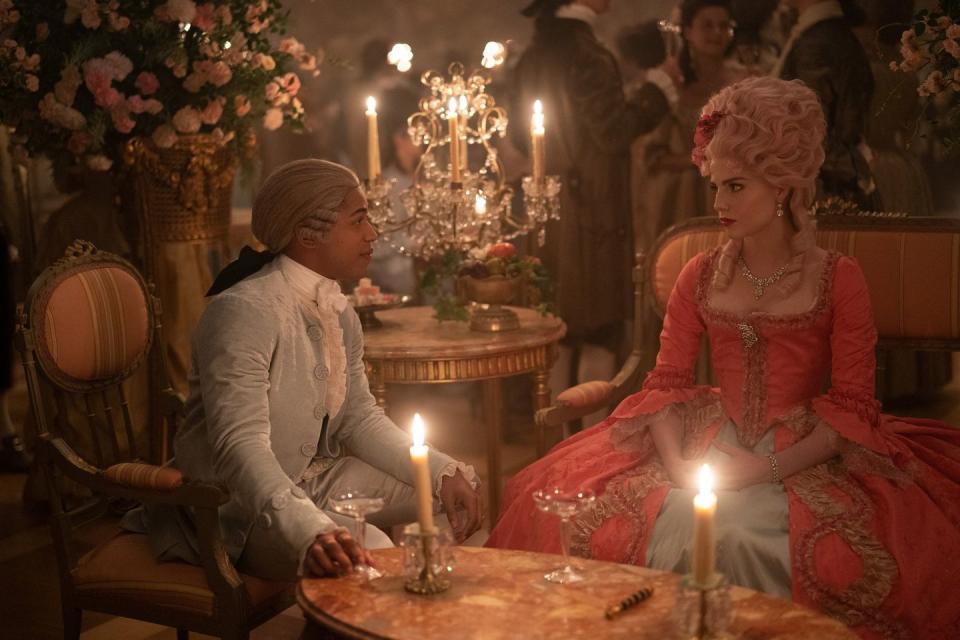
Then there was the hands-on research. Murphy and set decorator Lotty Sanna gathered references from museums like the Musée des Arts Décoratifs, Musée Carnavalet, and Versailles. “I took thousands of photographs to help inform the film’s color palette, soft furnishings, furniture, and props,” says Murphy. “We picked up details such as the billiard tables of the time, lighting, window treatments, furniture placements, opera stage settings, and revolutionary scenes from the streets of Paris.” To actually outfit many of the scenes, Sanna and Murphy shopped the flea markets and antique dealers of Paris for period-correct furniture and decorative accessories.
There is a distinct difference throughout the film drawn between public and private spaces, and cinematographer Jess Hall deftly communicates the differences in scale. At the royal opera we get insight into how tightly curated the royal family’s inner circle was. At Versailles, meanwhile, we experience the vast size of the court as the camera pans through room after room, lit almost entirely by candlelight.
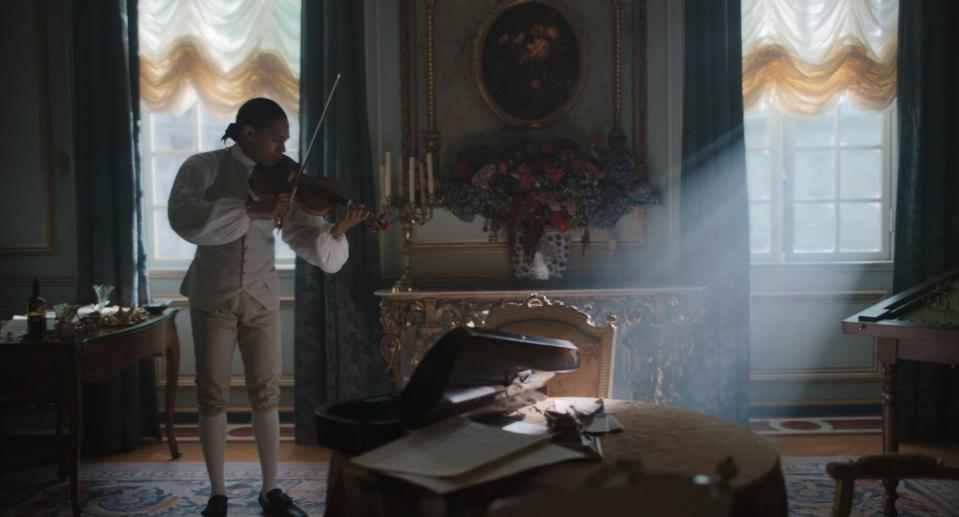
One party scene features tables topped with pastries and bonbons, melting candles in five-arm candelabras, and silver vases erupting with flora. Murphy and Sanna even brought in a specialized cake artist, Sophia Stolz, from Vienna, to do the original “queen of cake” justice. “It was essential to show the excesses of 18th-century Paris, for the audience to be immersed in it as Joseph was, and for them to become aware of social problems surfacing as we moved toward the French Revolution,” says Murphy. “We wanted these scenes to depict the queen’s significant excess and insensitive frivolity to contrast with the gathering momentum of the French Revolution in the streets. Sophia created a large table of cake pieces inspired by a book of lithographs of desserts and cuisine created for the queen in the late 18th-century.”
For the chevalier’s apartment in Paris, where much of the movie is filmed, Murphy visited the Hotel le Peletier, a Baroque mansion in Paris, and the Château de Maisons-Laffitte in the suburbs of Paris. “These interiors formed vital reference points for this design, which was a set we built on stage in Prague,” says Murphy. “Joseph’s apartment again supports the story by showing us where he is artistically and emotionally. The spaces’ design and flow made him appear at home and alienated within his own world.”
Murphy’s work here played a large part in helping Harrison embody his role. “Karen Murphy is a genius and so well researched,” the actor says. “She would place little things to play with that Joseph would have in his apartment like a pinball machine, little collectibles, books, letters, and so much more. It made it feel more like a bachelor’s pad and a little boyish in ways that ring so true for where Joseph is in his life when we meet him.”
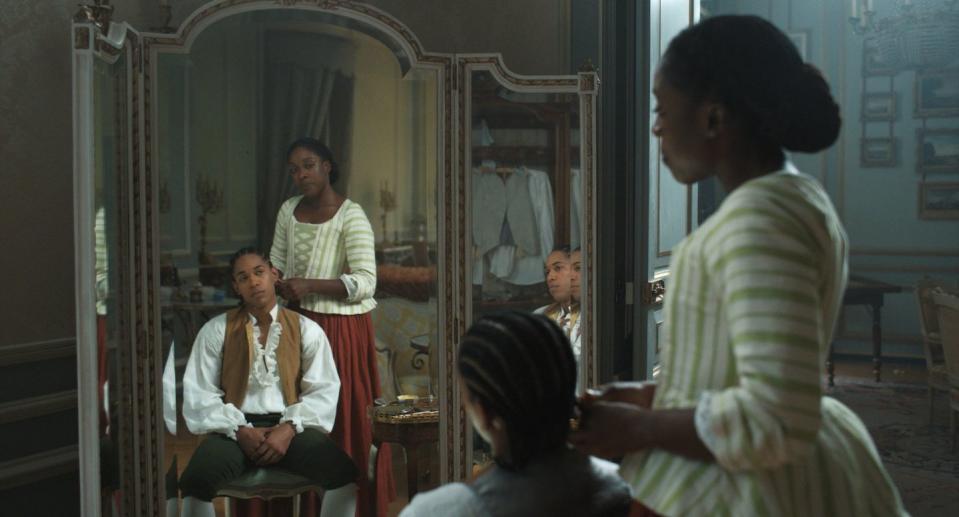
It’s through scenic details—in both the sets and the costumes—that document the chevalier’s slow, painful journey to self-understanding and self-love. Toward the end of the film, for instance, we see him trade a powdered, Western-style wig for cornrows done by his mother. It is this journey, ultimately, that infuses such a decoratively impressive film with soul.
“I can find empathy for any character or human being, but what intrigued me about the chevalier was his misplaced focus,” Harrison reflects. “We often put all of our energy into something that doesn’t bring us joy and then we wonder why life feels so chaotic. I’m definitely guilty of it, most are. But that journey of identifying the misconceptions of success in your life is actually a rewarding one—and one we get to go on with Joseph.”
You Might Also Like

